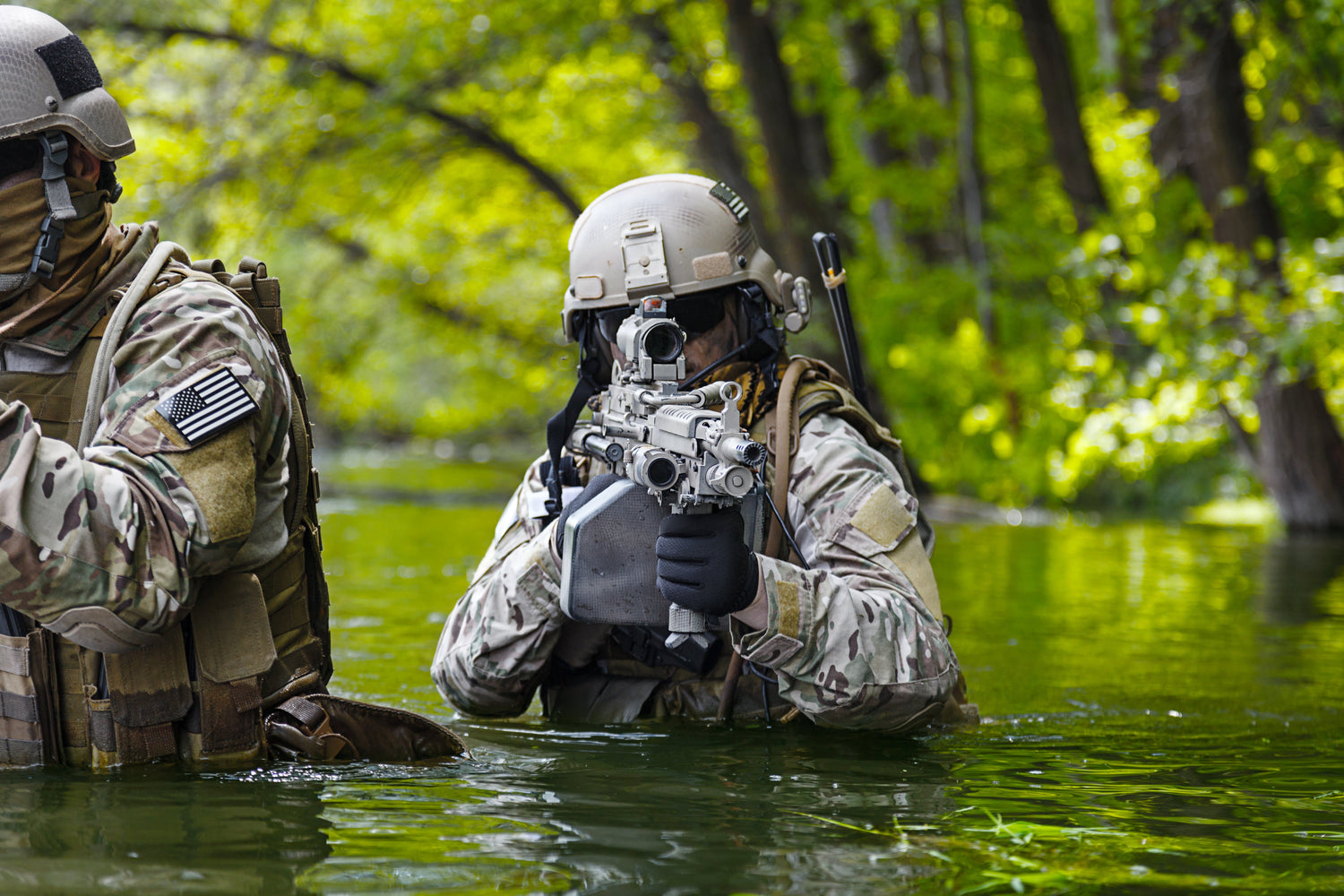The Use of Camouflage in Amphibious Operations
An amphibious operation is a trial. Troops leave the sea, advance toward the shore, expose themselves, strike.
Every detail matters. Camouflage is not secondary. It is an invisible weapon.
Applied correctly, it delays detection, preserves initiative, protects soldiers. In a landing, surprising the enemy means surviving.
1. Particular Constraints
On a beach, exposure is total. Sand, water, flat horizon: no cover. Silhouettes stand out, easy to target. Camouflage then becomes an indispensable ally. By distorting the enemy’s sight, enabling a stealthy advance, and ensuring superiority before the strike, the advantage is secured.
2. Historical Legacy
Amphibious camouflage has a history. In Normandy, 1944, the Allies used it on a massive scale. Nets, disruptive paint, night landings: everything served to hide preparations.
Later, in Grenada 1983, the Americans reinforced these practices. Smoke screens, discreet movement, naval cover. The idea remains the same: deceive, approach, strike.
3. Types of Coastal Camouflage
Every shoreline imposes its own choices.
-
Beach: sand and beige tones. Irregular nets. Gradual disappearance of shapes.
-
Sea: hulls painted in dazzle, contours broken. Barges and ships blending with waves.
-
Vegetated zones: light ghillie suits, hybrid sand-vegetation. Discreet infiltration into partial cover.
Three terrains, three solutions. Always the same goal: not to be seen.
4. Concealment Strategies
An amphibious operation is built in layers.
-
At night: darkness hides silhouettes.
-
With smoke: the curtain blocks movement, breaks line of sight, slows the enemy.
-
With multispectral technologies: visible, infrared, thermal signatures—all reduced.
-
With masked vehicles: nets, special coatings, adaptive paints. Every machine disappears behind its backdrop.
Here, camouflage supports every phase.
5. Modern Technologies
Recent equipment has crossed a threshold.
-
Modular suits: patterns adjusting to terrain.
-
Anti-infrared nets: heat erased, engines concealed.
-
Chameleon paints: colors shifting in real time.
6. Case Studies
-
Normandy, 1944: Allied surprise, born from global camouflage. Night landing, aerial diversion, masked equipment. Result: a foothold despite heavy defenses.
-
Grenada, 1983: rapid approach, smoke screens, exploited coastal cover. Detection avoided, advance secured.
These examples confirm an obvious truth: concealment is worth as much as a battalion.
7. FAQ
Which camouflage is best for an open beach?
Sand and light gray tones, reinforced with irregular nets.
Does modern camouflage block thermal vision?
Yes. Certain coatings strongly reduce thermal signatures.
Where can specialized equipment be found?
From suppliers like Nutsof, experts in amphibious solutions.
Conclusion
Camouflage in amphibious operations is not a detail: it is a strategy. It protects troops, masks assets, sustains surprise. In a world where surveillance relies on drones, radars, and thermal sensors, invisibility demands both innovation and discipline.
On a beach, in the water, or at the edge of sparse vegetation, one rule endures: the unseen fighter strikes first.
Best regards,
The Nutsof Team
Advanced Camouflage & Defense Solutions
🌐 www.nutsof.com
Follow us on Facebook and Instagram for the latest in advanced military camouflage technologies.


